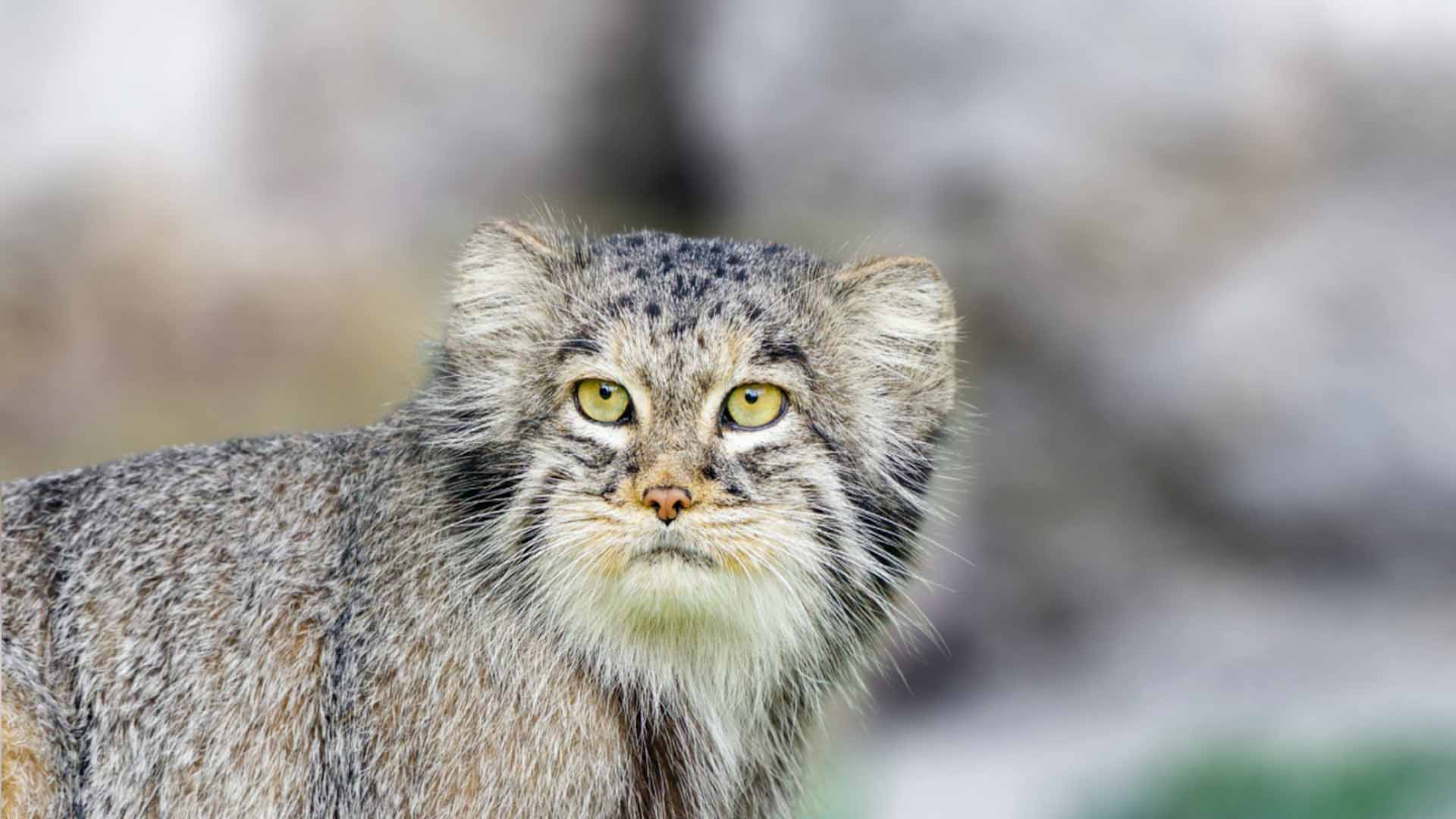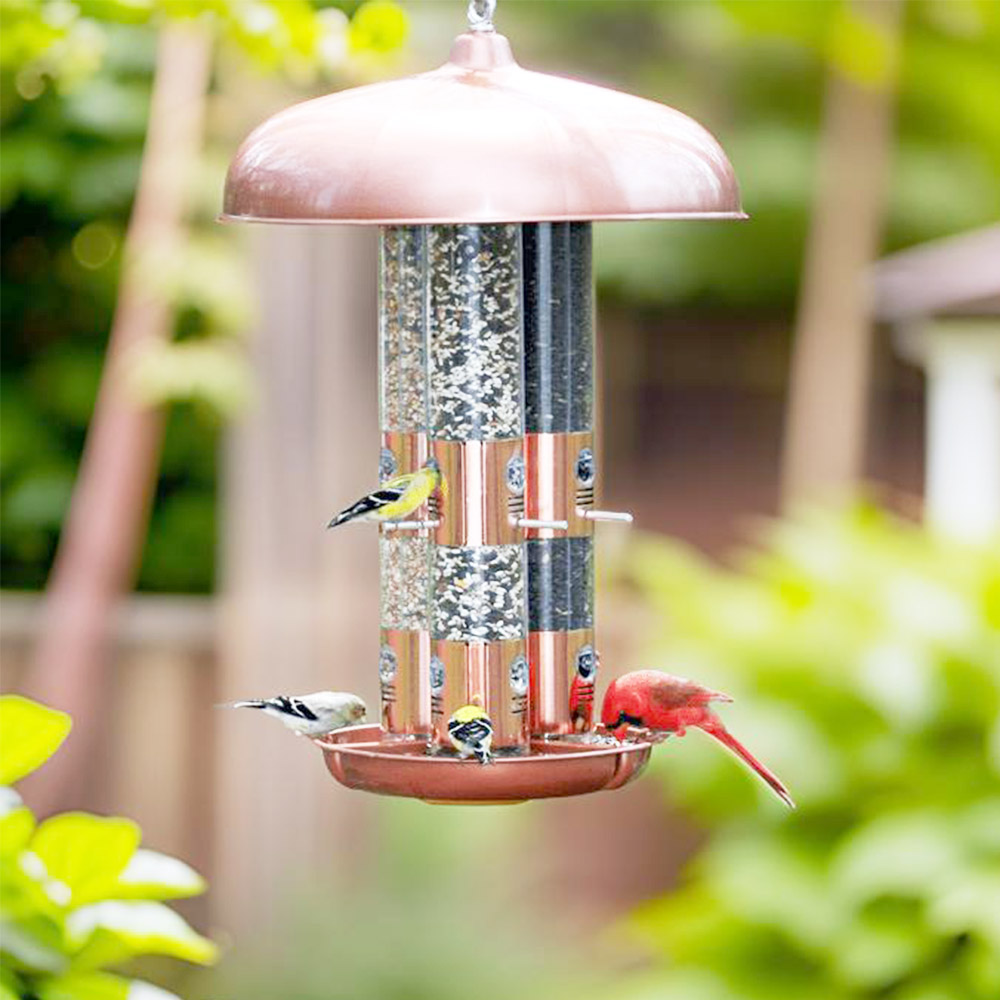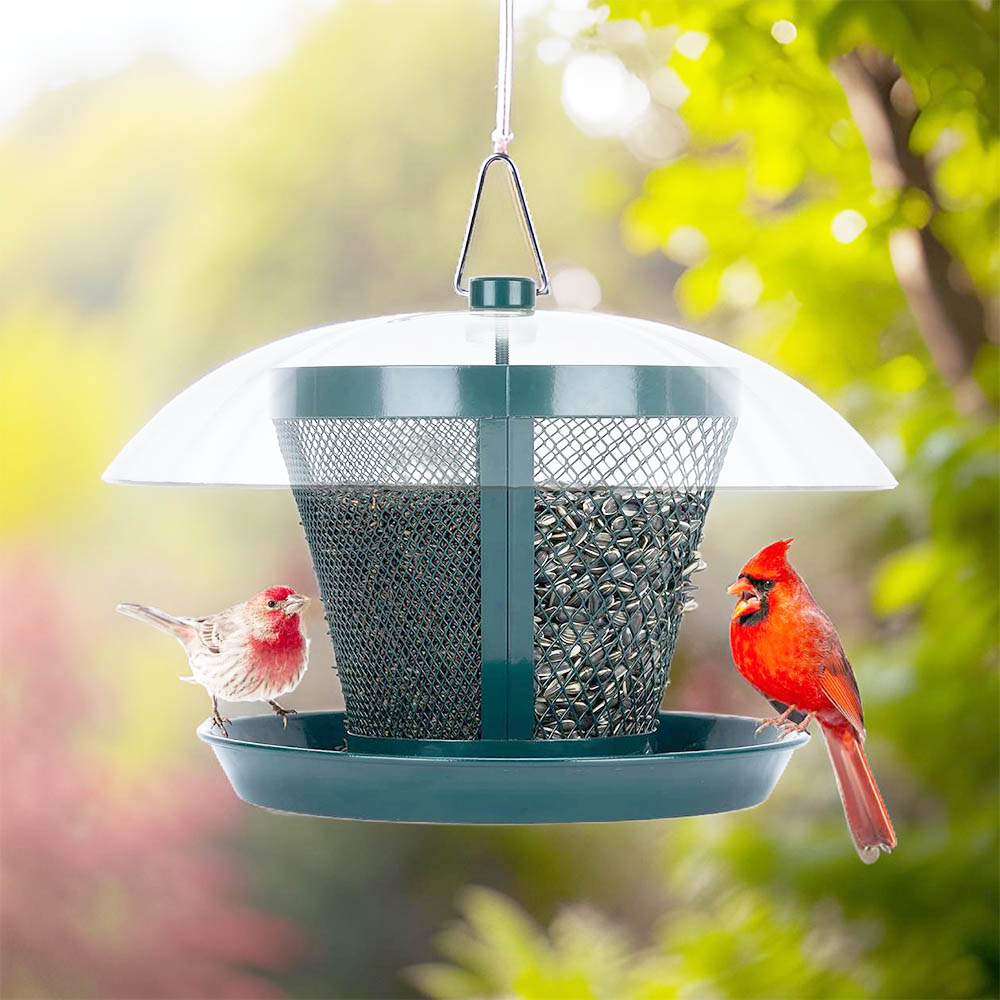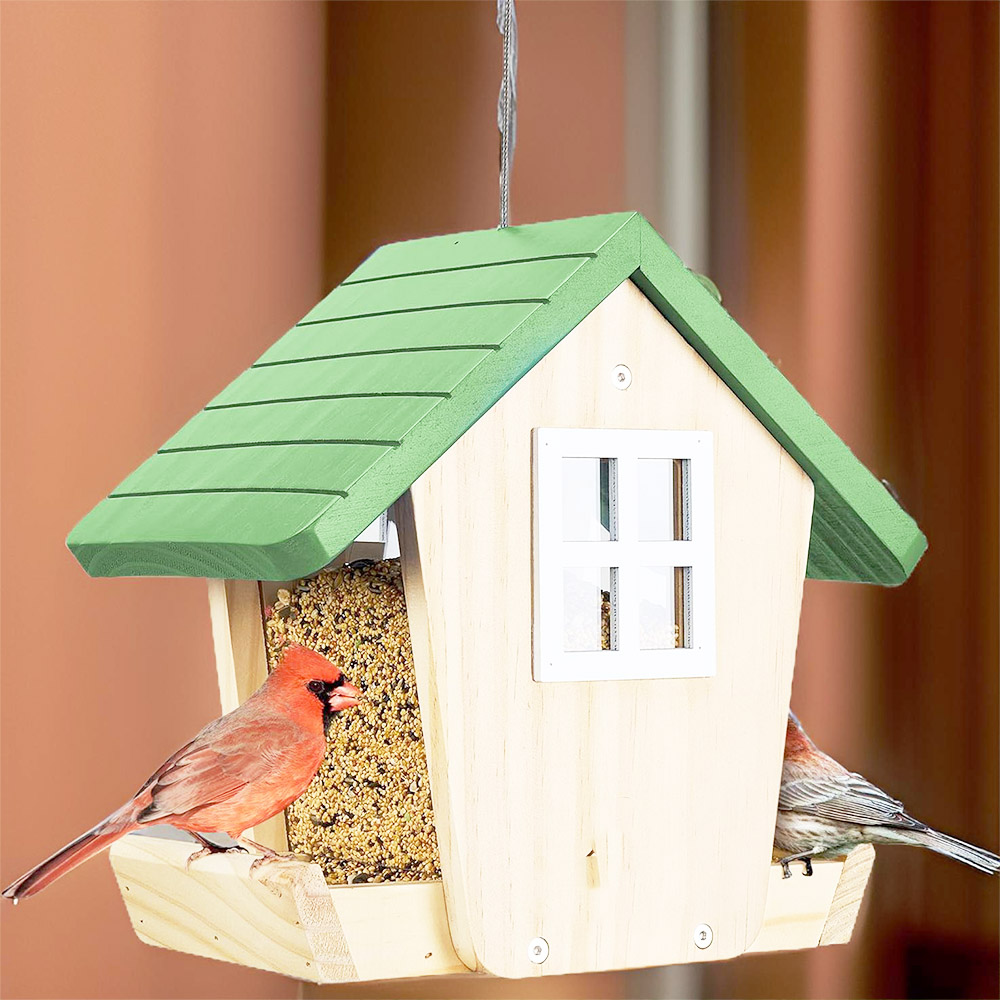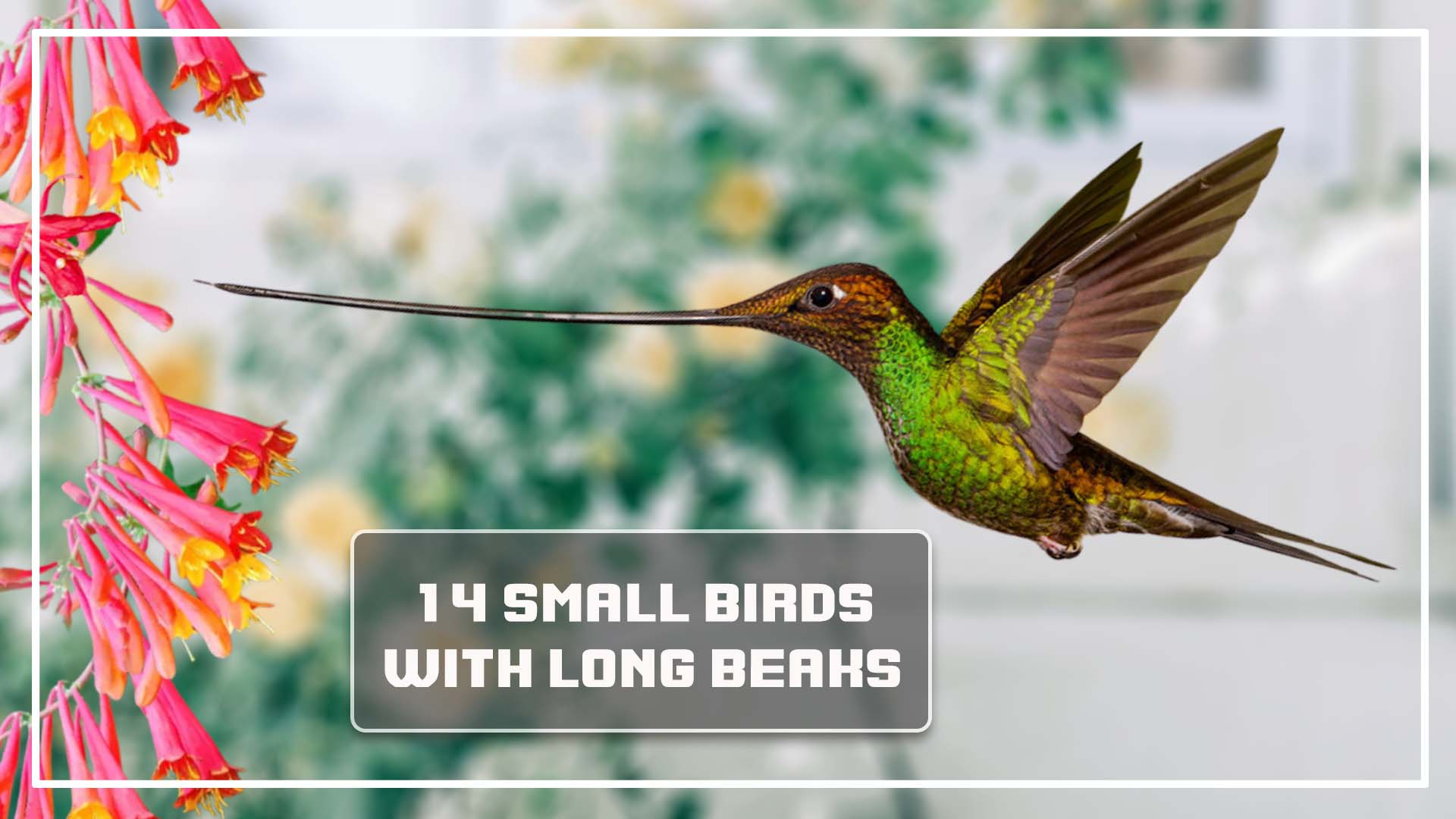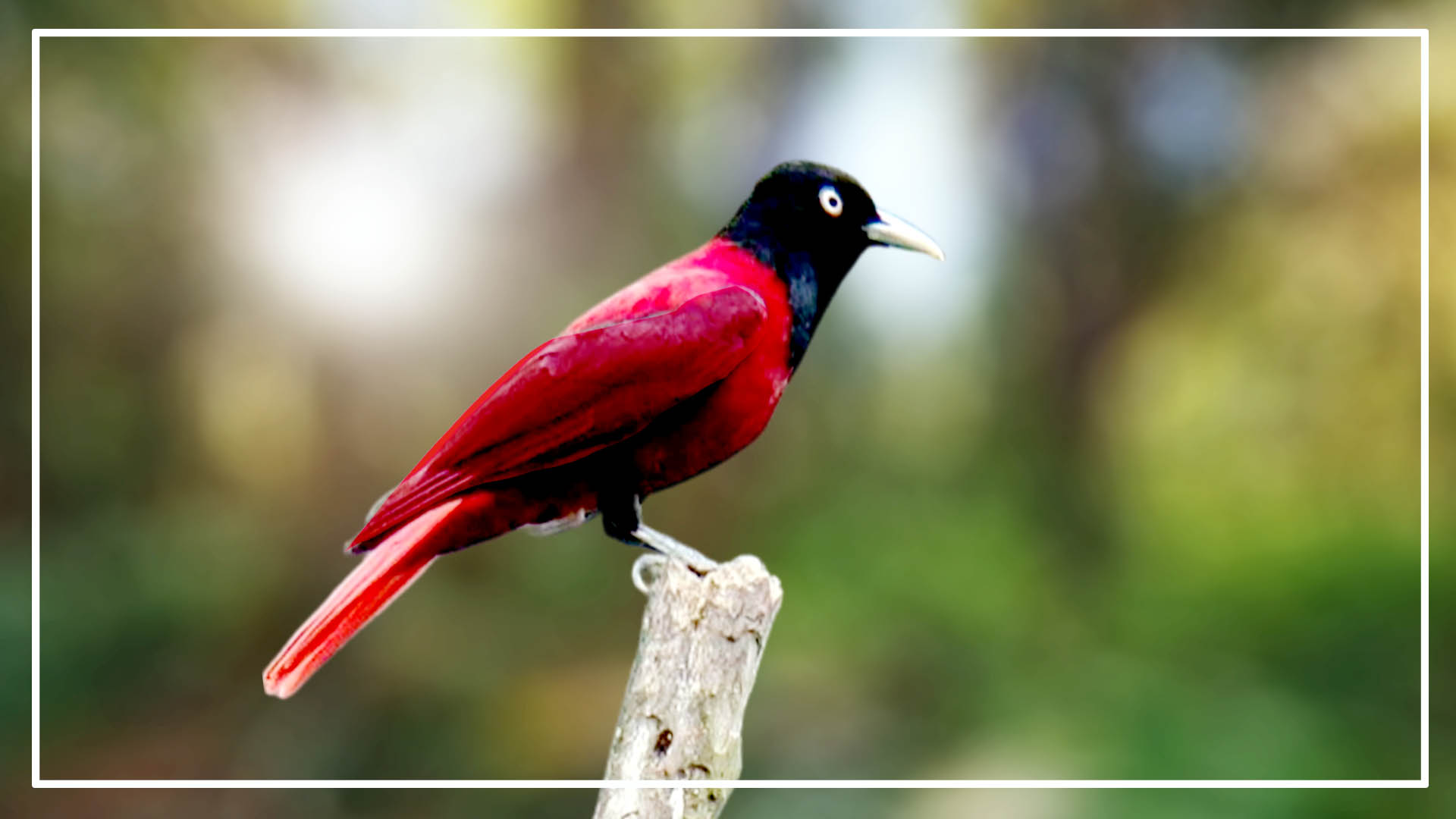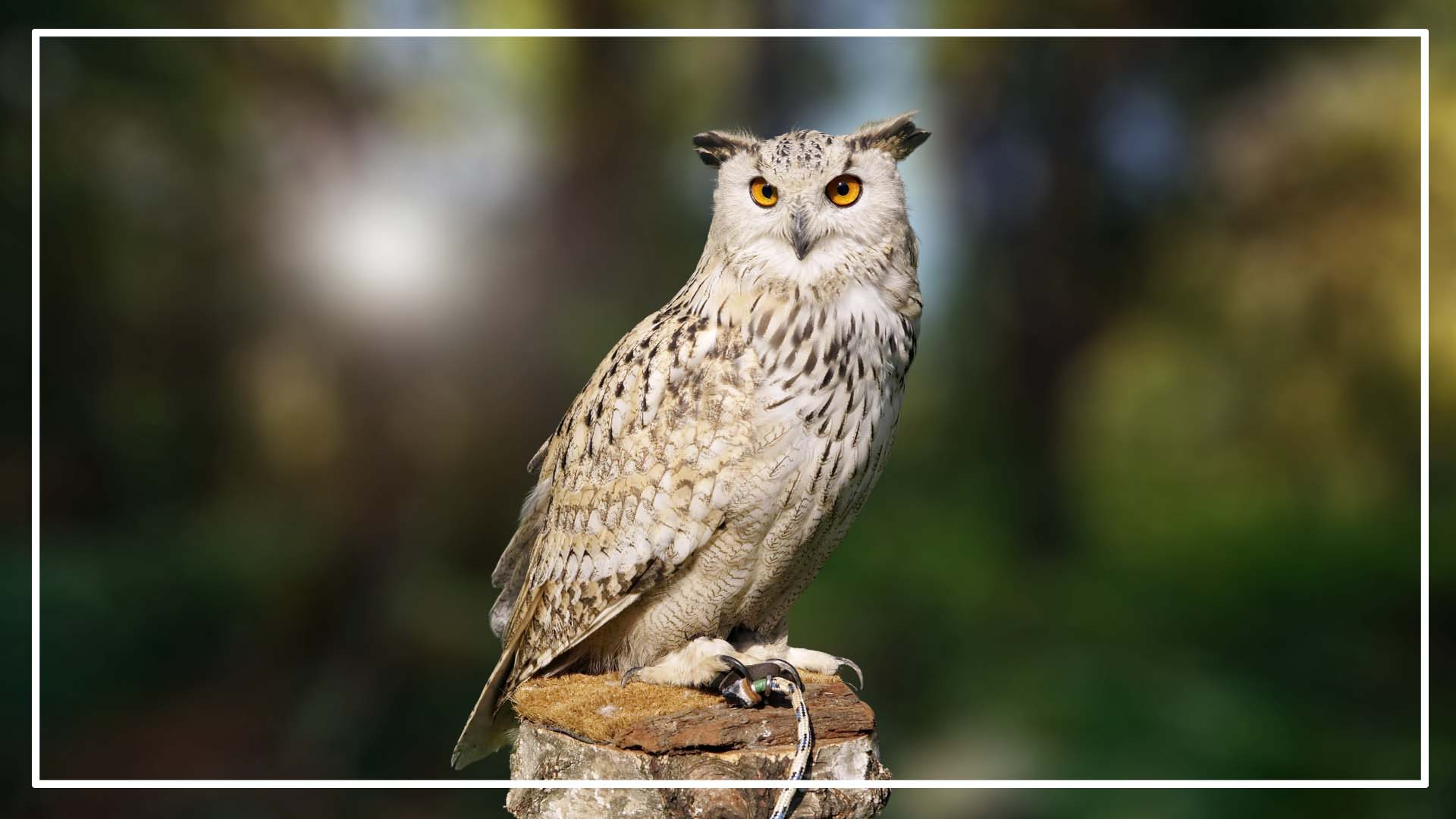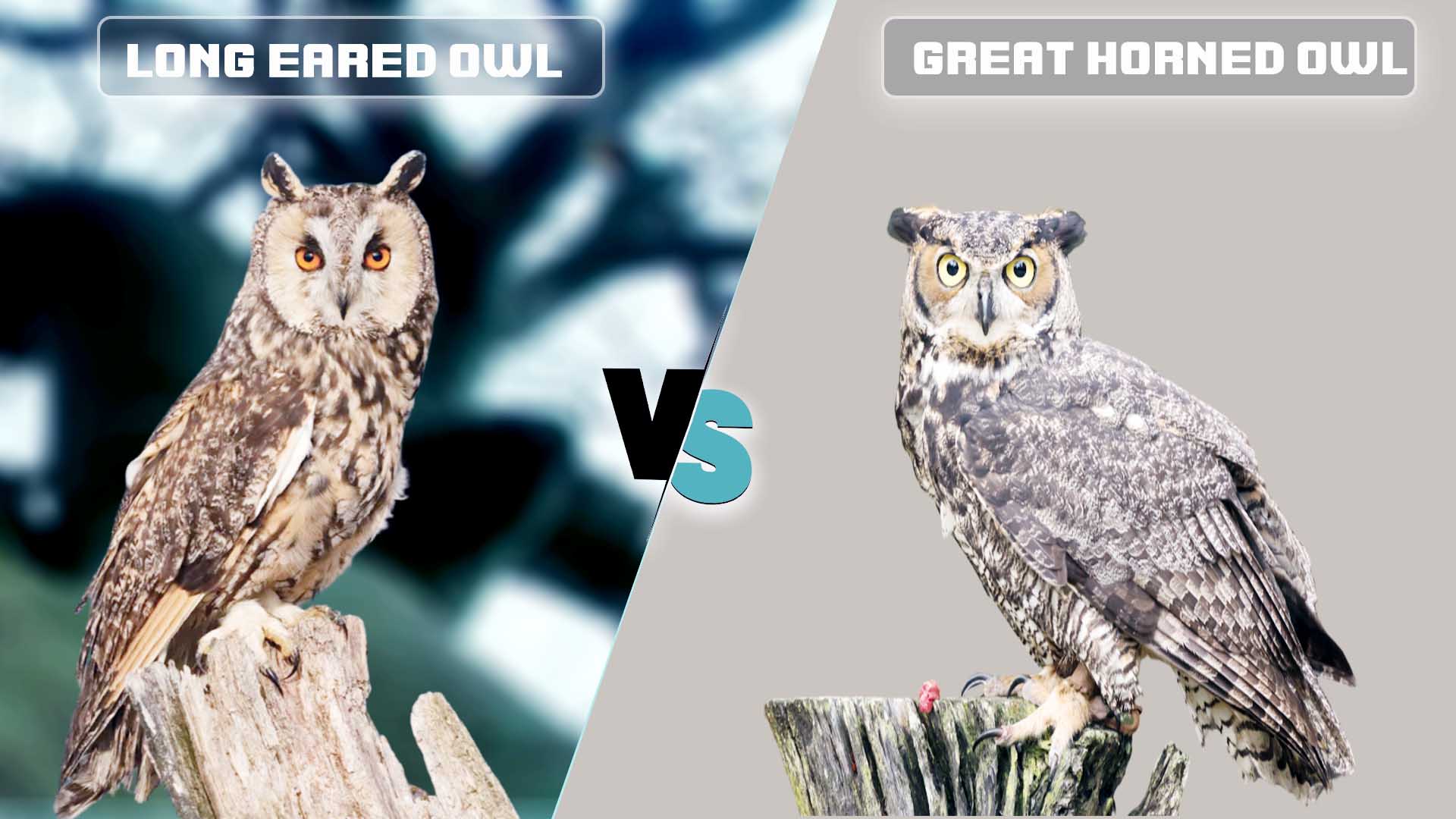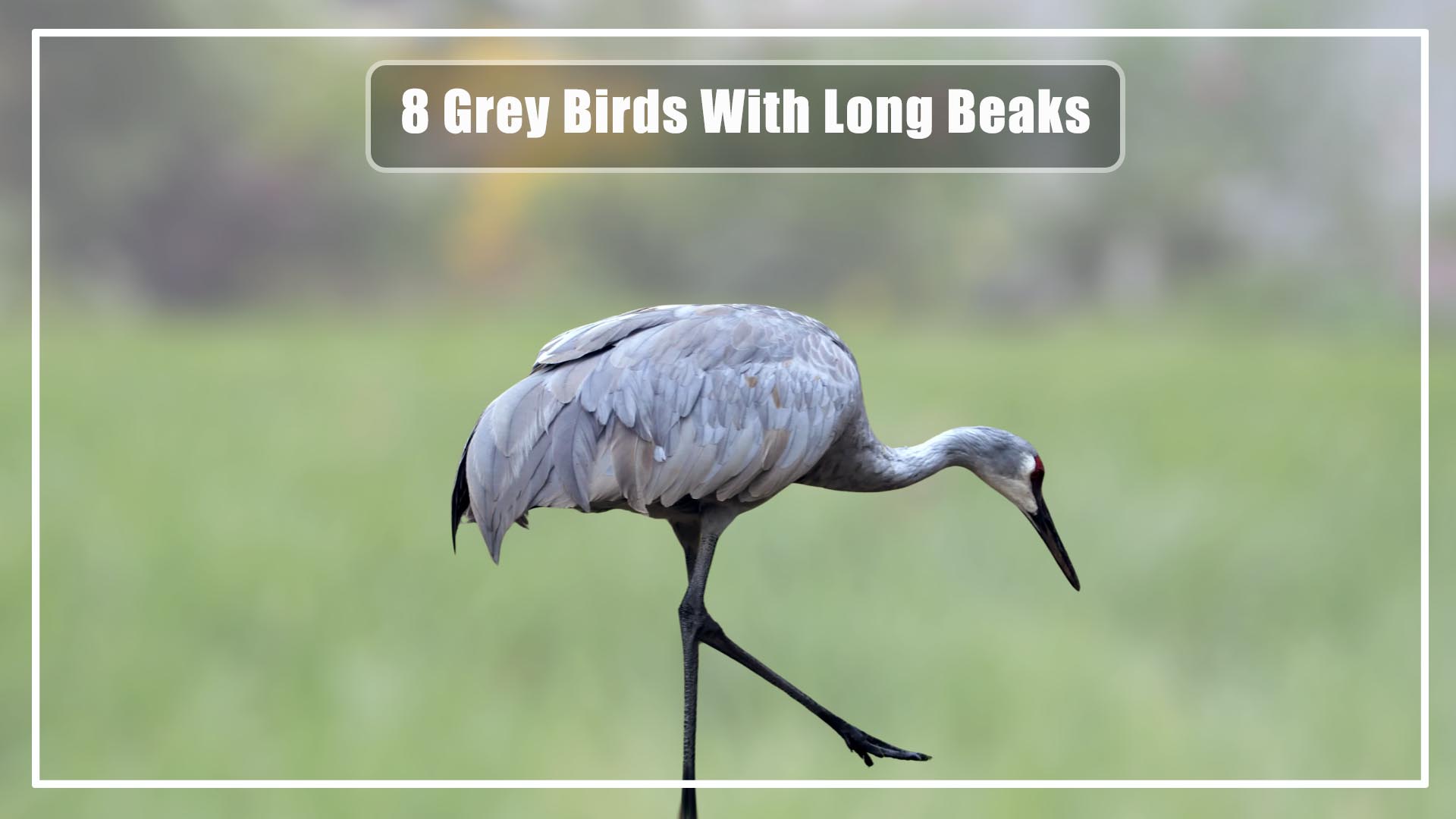When it comes to the avian world, diversity knows no bounds. Birds come in various shapes, sizes, and colors, and one fascinating aspect of this diversity is the variation in beak length. While many birds have relatively short beaks adapted to their specific feeding habits, there are some small birds with impressively long beaks.
In this article, we’ll explore 14 such small birds with long beaks, discussing their color, size, weight, diet, and typical locations where you might spot them.
1. Carolina Wren: A Small Bird with a Long Beak
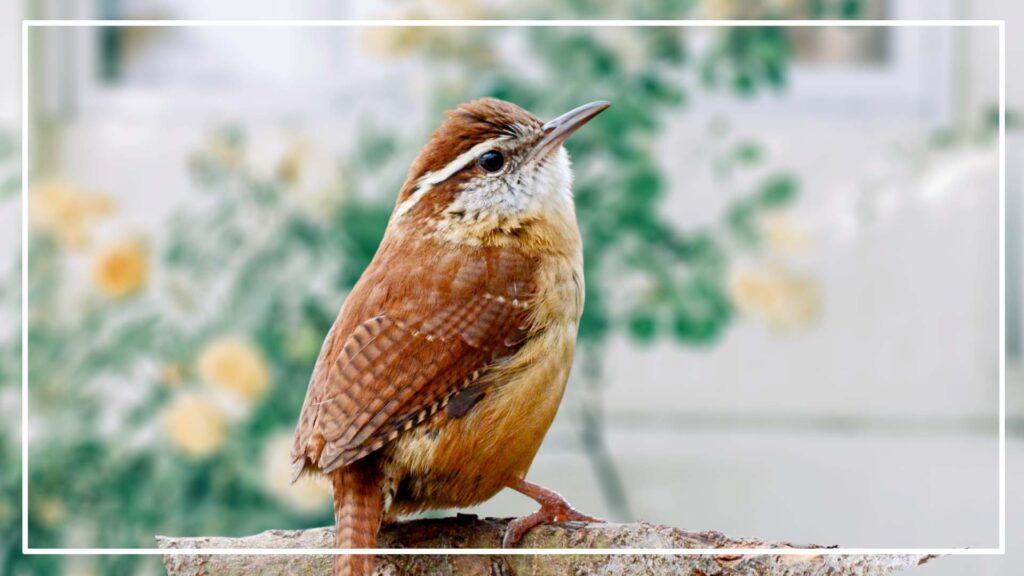
Carolina Wrens are charming little birds known for their small size and distinctive long beaks. These birds measure approximately 4.5 to 5.5 inches in length, making them compact and agile. Despite their small stature, they pack a lot of character into their appearance.
Color: Carolina Wrens sport a rich, reddish-brown plumage that gives them a warm and inviting look. One of their most prominent features is the striking white eyebrow stripe that contrasts beautifully with their brown plumage.
Diet: When it comes to their diet, Carolina Wrens are primarily insectivorous. They forage for a wide variety of insects, spiders, and small invertebrates. Additionally, they occasionally indulge in berries, adding a hint of sweetness to their diet.
Location: These birds are commonly found in the southeastern United States. They thrive in a range of habitats, from woodlands and brushy areas to suburban gardens. Keep an eye out for these delightful birds in these regions.
2. Cactus Wren
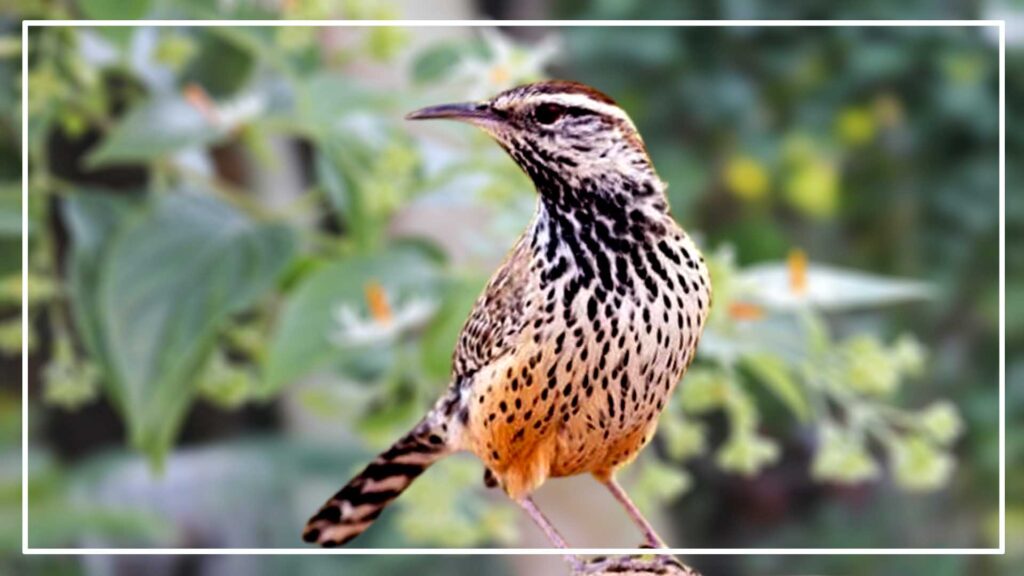
The Cactus Wren is another bird that fits the description of having a long beak, but it stands out not only for its beak but also for its relatively larger size among small birds.
Size: Cactus Wrens are robust birds, measuring about 7.1 to 9.1 inches in length. Their long beak is a significant feature given their size.
Weight: These birds are relatively heavier, with an average weight ranging from 1.13 to 1.98 ounces.
Color: Their plumage features earthy tones, with a distinctive brownish hue. White bars on their wings and tail create a striking contrast.
Diet: Cactus Wrens have an omnivorous diet. They feed on a diverse range of foods, including insects, fruits, seeds, and even small reptiles, showcasing their adaptability.
Location: The Cactus Wren can be spotted in arid regions of the southwestern United States and northern Mexico, often found amidst cacti and desert landscapes.
3. Brown-Headed Nuthatch: A Tiny Bird with a Long Beak
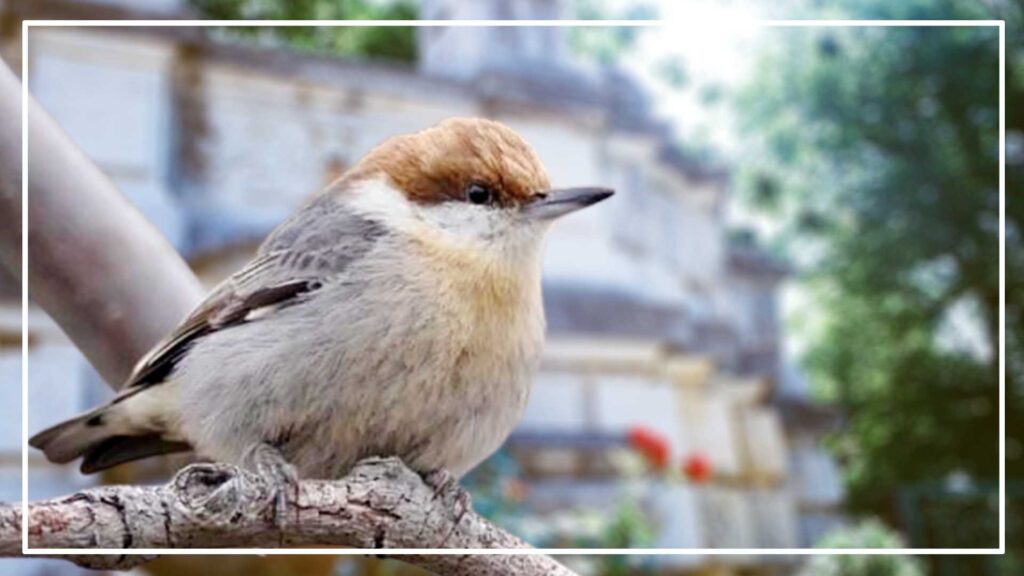
Brown-headed nuthatches are endearing little birds with long beaks that are perfectly adapted to their unique feeding habits.
Size: These nuthatches are among the smallest of birds with long beaks, measuring approximately 3.7 to 4.7 inches in length.
Weight: Despite their tiny size, they are quite lightweight, typically weighing between 0.34 and 0.46 ounces.
Color: Their appearance includes a brown head, complemented by a distinctive blue-gray back and white underparts, giving them a charming and crisp appearance.
Diet: Brown-headed nuthatches have a specialized diet, mainly consisting of insects, seeds, and pine nuts. Their long beaks aid in extracting insects from tree bark.
Location: These delightful birds are commonly found in the pine forests of the southeastern United States, where they display their acrobatic foraging skills.
4. Brown Creeper: The Master of Camouflage
Brown Creepers are remarkable small birds with long beaks known for their exceptional camouflage and distinctive feeding behavior.
Size: Brown Creepers are petite birds, measuring approximately 4.5 to 5.1 inches in length.
Weight: They are lightweight, typically ranging from 0.2 to 0.4 ounces.
Color: As their name suggests, these birds have brown plumage that blends seamlessly with the bark of trees. Their streaked brown appearance helps them stay hidden from predators.
Diet: Brown Creepers have a unique feeding strategy. They use their long, slender beaks to probe for insects and spiders hiding in the crevices of tree bark. This specialized diet sets them apart from many other small birds.
Location: You can find Brown Creepers across North America, particularly in forests and woodlands. Their cryptic plumage makes them challenging to spot, but their distinctive behavior is a clue to their presence.
5. Canyon Wren: A Songster of the Canyons
Canyon Wrens are small birds with long beaks that are renowned for their melodious songs echoing through rugged canyons.
Size: These wrens measure around 4.7 to 5.9 inches in length, making them compact birds.
Weight: They are relatively lightweight, typically weighing between 0.6 to 0.7 ounces.
Color: Canyon Wrens have cinnamon-brown plumage with intricate patterns. Their strikingly long, curved beaks are ideal for capturing insects and spiders.
Diet: Their primary diet consists of arthropods, including insects and spiders, which they glean from rocky cliffs and crevices.
Location: Canyon Wrens are commonly found in western North America, particularly in rugged, rocky terrain. Their enchanting songs often accompany hikers exploring these breathtaking landscapes.
In the upcoming sections, we will continue our journey through the world of small birds with long beaks, discovering more about their unique characteristics and habitats.
6. Kiwi: A Long Beak Specialist
The Kiwi is a bird that takes the concept of a long beak to the extreme, showcasing an extraordinary adaptation for its specific lifestyle.
Size: Kiwis are relatively large birds, measuring around 14 to 18 inches in length, making them the largest on our list of small birds with long beaks.
Weight: Despite their size, they are not particularly heavy, with an average weight ranging from 2 to 5.3 pounds.
Color: Kiwis have shaggy, brownish-gray plumage that helps them blend into their forested habitats. They lack wings and have tiny, almost non-existent tails.
Diet: These unique birds have long, slender beaks that they use to probe the ground for invertebrates, including worms, insects, and their favorite, earthworms.
Location: Kiwis are native to New Zealand, where they are emblematic birds. They inhabit forests, scrublands, and even farmlands, where they forage for their invertebrate prey.
7. Rock Wren: Scaling the Heights with a Long Beak
The Rock Wren, with its remarkable long beak, is a master of navigating rocky terrains and crevices in search of food.
Size: Rock Wrens are small to medium-sized birds, measuring around 4.3 to 5.5 inches in length.
Weight: They are relatively lightweight, typically weighing between 0.6 and 0.7 ounces.
Color: These wrens have brown plumage with streaks that provide them with excellent camouflage among rocks and boulders.
Diet: Rock Wrens primarily feed on insects and spiders, using their long, slender beaks to reach into crevices where their prey may be hiding.
Location: You can find Rock Wrens in rocky habitats across North America, from desert canyons to alpine cliffs. They are agile climbers, often perching on steep rock faces.
8. Marsh Wren: A Wetland Specialist
Marsh Wrens are small birds with long beaks that are perfectly adapted to their wetland habitats.
Size: These wrens are small, measuring approximately 3.9 to 4.7 inches in length.
Weight: They are lightweight, typically weighing between 0.3 and 0.4 ounces.
Color: Marsh Wrens have intricate brown plumage with streaks and a white eyebrow stripe, adding to their distinctive appearance.
Diet: Their diet mainly consists of insects and small invertebrates found in marshes and reed beds.
Location: Marsh Wrens are commonly found in wetlands and marshes throughout North America. Their long beaks help them navigate dense vegetation in search of food.
9. Sedge Wren: Navigating Grasslands with Precision
Sedge Wrens are small birds with long beaks that excel in navigating the grassy habitats they call home.
Size: These wrens are petite, measuring around 4.3 to 5.1 inches in length.
Weight: They are lightweight, typically weighing between 0.3 and 0.4 ounces.
Color: Sedge Wrens have a subtle brown plumage with fine streaking that provides effective camouflage in grassy settings.
Diet: Their diet consists mainly of insects and small invertebrates found in grasslands and wet meadows.
Location: Sedge Wrens are commonly found in North America, particularly in grassy habitats such as meadows, marshes, and wetlands. Their long beaks are ideal for probing into grasses to find their prey.
10. Sedge Warbler: A Songbird of Wetlands
The Sedge Warbler is a small bird with a long beak known for its melodious songs and preference for wetland habitats.
Size: Sedge Warblers are compact birds, measuring approximately 4.3 to 5.1 inches in length.
Weight: They are lightweight, typically weighing between 0.3 and 0.4 ounces.
Color: These warblers have a brownish plumage with intricate streaks, providing them with effective camouflage in reed beds.
Diet: Sedge Warblers primarily feed on insects and small invertebrates found in wetland vegetation.
Location: You can spot Sedge Warblers in wetlands and reed beds across Europe and Asia. Their long beaks are well-suited for reaching insects hiding amidst dense vegetation.
11. Bewick’s Wren: A Western Delight
Bewick’s Wrens are small birds with long beaks that grace the western regions of North America with their presence.
Size: These wrens measure around 4.7 to 5.9 inches in length, placing them in the small to medium-sized category.
Weight: They are relatively lightweight, typically weighing between 0.4 and 0.6 ounces.
Color: Bewick’s Wrens have a warm brown plumage with subtle streaks and a distinct white eyebrow stripe.
Diet: Their diet includes a variety of insects and spiders, which they glean from shrubs and low vegetation.
Location: Bewick’s Wrens are commonly found in western North America, where they inhabit scrublands, woodlands, and urban gardens. Their long beaks aid in their foraging among foliage.
12. House Wren: A Familiar Backyard Visitor
House Wrens are small birds with long beaks that often make themselves at home in human settlements.
Size: These wrens are compact, measuring approximately 3.7 to 4.3 inches in length.
Weight: They are lightweight, typically weighing between 0.3 and 0.4 ounces.
Color: House Wrens have plain brown plumage that helps them blend into a variety of environments.
Diet: Their diet mainly consists of insects and spiders, making them valuable for pest control.
Location: House Wrens are widespread in North and South America, and they readily adapt to nesting in birdhouses and urban areas. Their long beaks facilitate efficient insect hunting.
13. Winter Wren: A Tiny Bird with a Mighty Song
The Winter Wren may be small in size, but it possesses a long beak and a remarkable voice that fills the forests during the colder months.
Size: Winter Wrens are among the smallest birds on our list, measuring about 3.5 to 4.3 inches in length.
Weight: They are lightweight, typically weighing between 0.2 and 0.4 ounces.
Color: These wrens have rich brown plumage with subtle mottling, providing them with excellent camouflage amidst leaf litter.
Diet: Winter Wrens primarily feed on insects and small invertebrates found in forested areas.
Location: You can find Winter Wrens in North America, particularly in wooded habitats. Their long beaks are essential for probing into leaf litter and crevices in search of food.
14. Whimbrel: The Long-Beaked Shorebird
The Whimbrel is a shorebird with a notably long beak, well-suited for probing into sand and mud for its aquatic prey.
Size: Whimbrels are medium-sized birds, measuring approximately 14 to 15 inches in length.
Weight: They are relatively lightweight for their size, typically weighing between 7.5 and 12 ounces.
Color: Whimbrels have mottled brown plumage and a long, curved beak that sets them apart from other shorebirds.
Diet: Their diet primarily consists of crustaceans, insects, and small fish, which they capture using their long beaks.
Location: Whimbrels are migratory birds, with their range spanning across North America, Europe, and Asia. They are commonly found along coastlines and estuaries, where they use their long beaks to forage in the sand and mud.
Related Birds
- White Birds in Florida With Long Beaks
- Black Birds With Long Beaks
- Medium Sized Brown Birds With Long Beaks
FAQs
What is the name of a small bird with a long beak?
One example of a small bird with a long beak is the Carolina Wren. These charming birds measure around 4.5 to 5.5 inches in length and are known for their distinctive reddish-brown plumage and a striking white eyebrow stripe. They primarily feed on insects, spiders, and small invertebrates and are commonly found in the southeastern United States, inhabiting woodlands, brushy areas, and suburban gardens.
What small bird has a short thick beak?
A small bird with a short, thick beak is the House Sparrow. House Sparrows are compact birds with a sturdy, conical beak that is adapted for cracking seeds. They have a brownish-gray plumage with black markings, and they are well-known for their adaptability to urban environments, often being found in cities and towns worldwide.
What bird has a long beak and long feet?
The bird with a long beak and long legs is the Great Blue Heron. These majestic waders are known for their tall stature, long legs, and extended S-shaped necks, which are complemented by a long, pointed beak. Great Blue Herons are often found near water bodies, where they use their long beaks to catch fish and other aquatic prey.
What bird has a long curved beak?
A bird with a long, curved beak is the American Avocet. These elegant shorebirds have distinctive, upturned bills that are slender and curved. Their beaks are adapted for probing into mud and shallow waters to capture small aquatic invertebrates, making them well-suited for their wetland habitats. American Avocets are often seen wading in salt marshes, estuaries, and shallow coastal areas across North America.
In Conclusion
The world of small birds with long beaks is a fascinating one, showcasing the incredible diversity and adaptability of avian life. From the melodious songs of the Sedge Warbler to the efficient foraging techniques of the Whimbrel, each of these birds has evolved to thrive in its unique habitat. Whether you’re a birdwatcher or simply curious about the natural world, exploring these remarkable creatures can be a rewarding experience. Keep your binoculars handy, and you may just catch a glimpse of these small wonders with long beaks in action.
